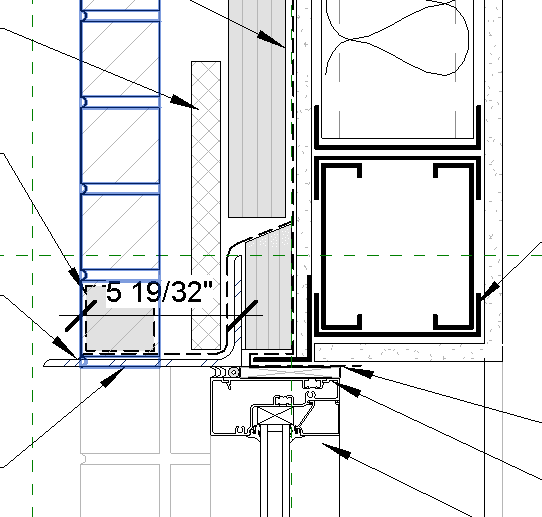LoneStarEngineer
Structural
Hey Guys,
I have got a quick question on loose lintels. When designing a loose lintel we assume the loose lintel to be braced at the end points. I am curious as to how this is assumed. I came up with the following arrangements,
1. If the vertical leg is against the sheathing, is it nailed/screwed back to the metal studs? (If this is the case, I have never seen any arch/struct detail call out this connection). This configuration produces the most torsion as the brick is supported at the free end of a 7” leg.
2. If the vertical leg is closer to the inside face of brick, does the vertical leg pushing on the inside face provide the restraint? And somehow the force transfers to the metal stud backup through the brick ties? (I am not sure how viable the load path is in this case, but perhaps it is satisfactory based on past performance since this is the most typical case and torsion is minimal)
3. If the vertical leg is somewhere in between (the case I have currently, see below), how is the lateral restraint achieved? Nail/screw through the rigid insulation to the metal stud backup?
In my case, I have stacked bond brick (So no arching action) with openings between 3'-0" to 6'-4" (At openings>6'-4", we provide structural steel backup framing) and the loose lintel has to support about 12' of brick on top.

I have got a quick question on loose lintels. When designing a loose lintel we assume the loose lintel to be braced at the end points. I am curious as to how this is assumed. I came up with the following arrangements,
1. If the vertical leg is against the sheathing, is it nailed/screwed back to the metal studs? (If this is the case, I have never seen any arch/struct detail call out this connection). This configuration produces the most torsion as the brick is supported at the free end of a 7” leg.
2. If the vertical leg is closer to the inside face of brick, does the vertical leg pushing on the inside face provide the restraint? And somehow the force transfers to the metal stud backup through the brick ties? (I am not sure how viable the load path is in this case, but perhaps it is satisfactory based on past performance since this is the most typical case and torsion is minimal)
3. If the vertical leg is somewhere in between (the case I have currently, see below), how is the lateral restraint achieved? Nail/screw through the rigid insulation to the metal stud backup?
In my case, I have stacked bond brick (So no arching action) with openings between 3'-0" to 6'-4" (At openings>6'-4", we provide structural steel backup framing) and the loose lintel has to support about 12' of brick on top.

